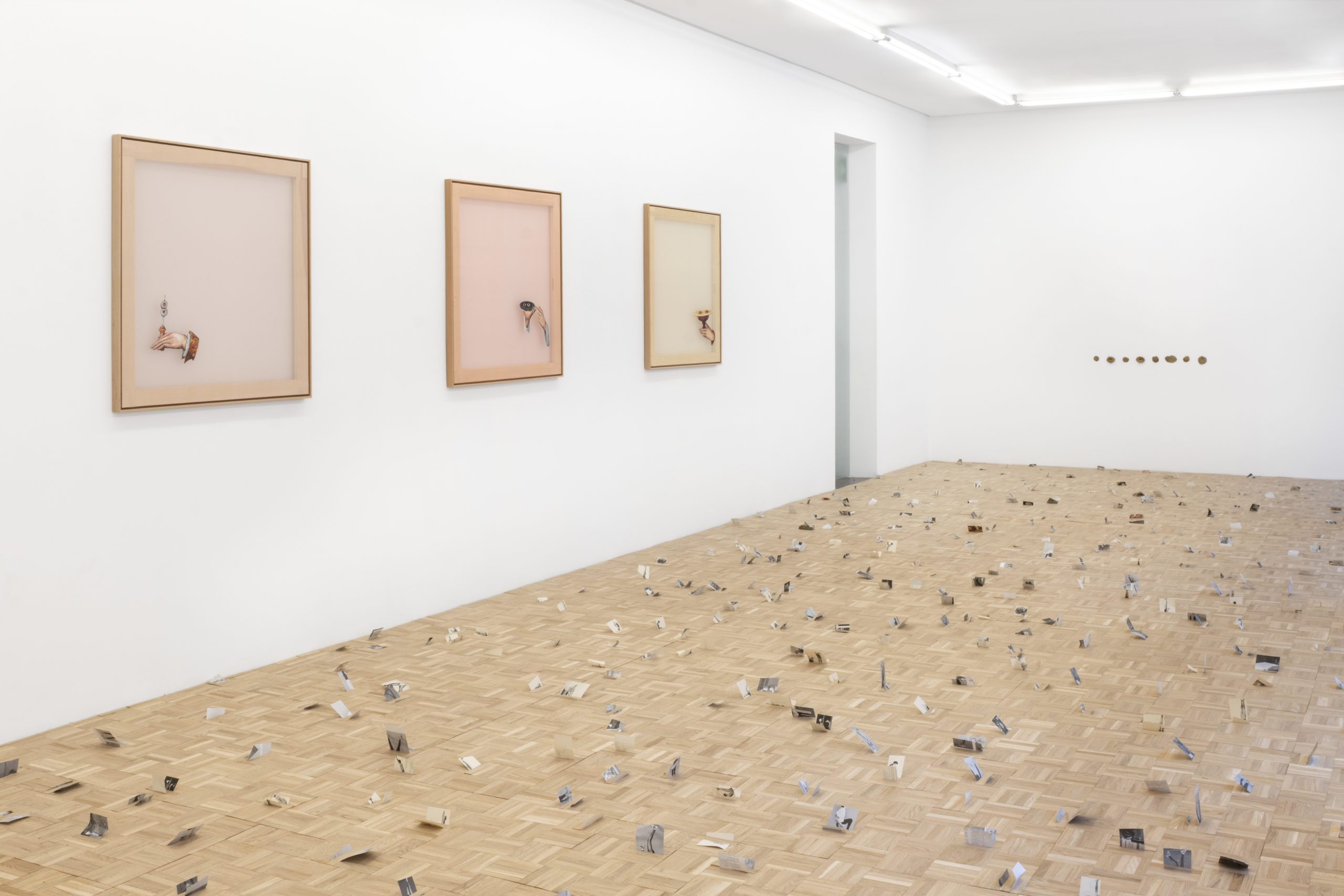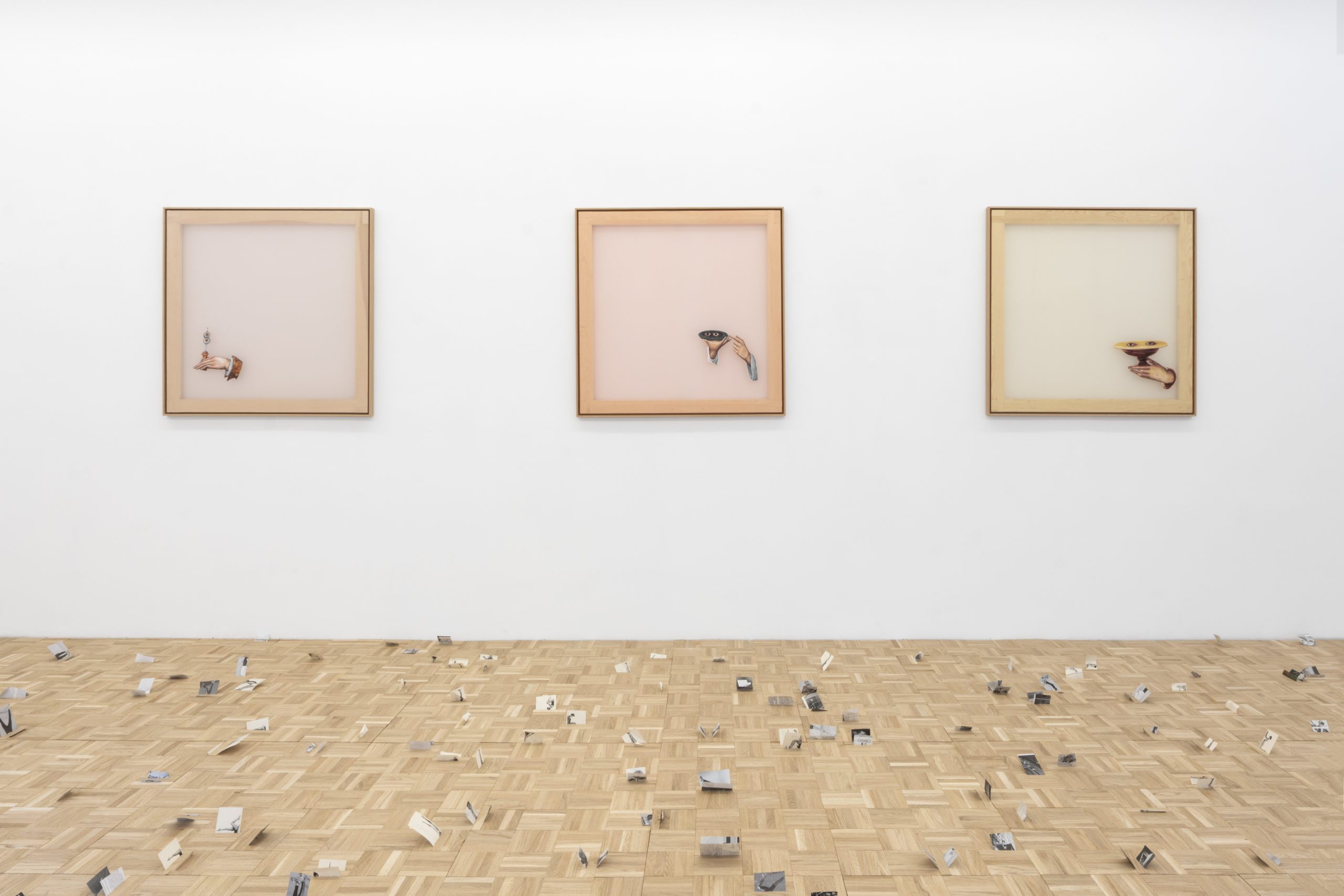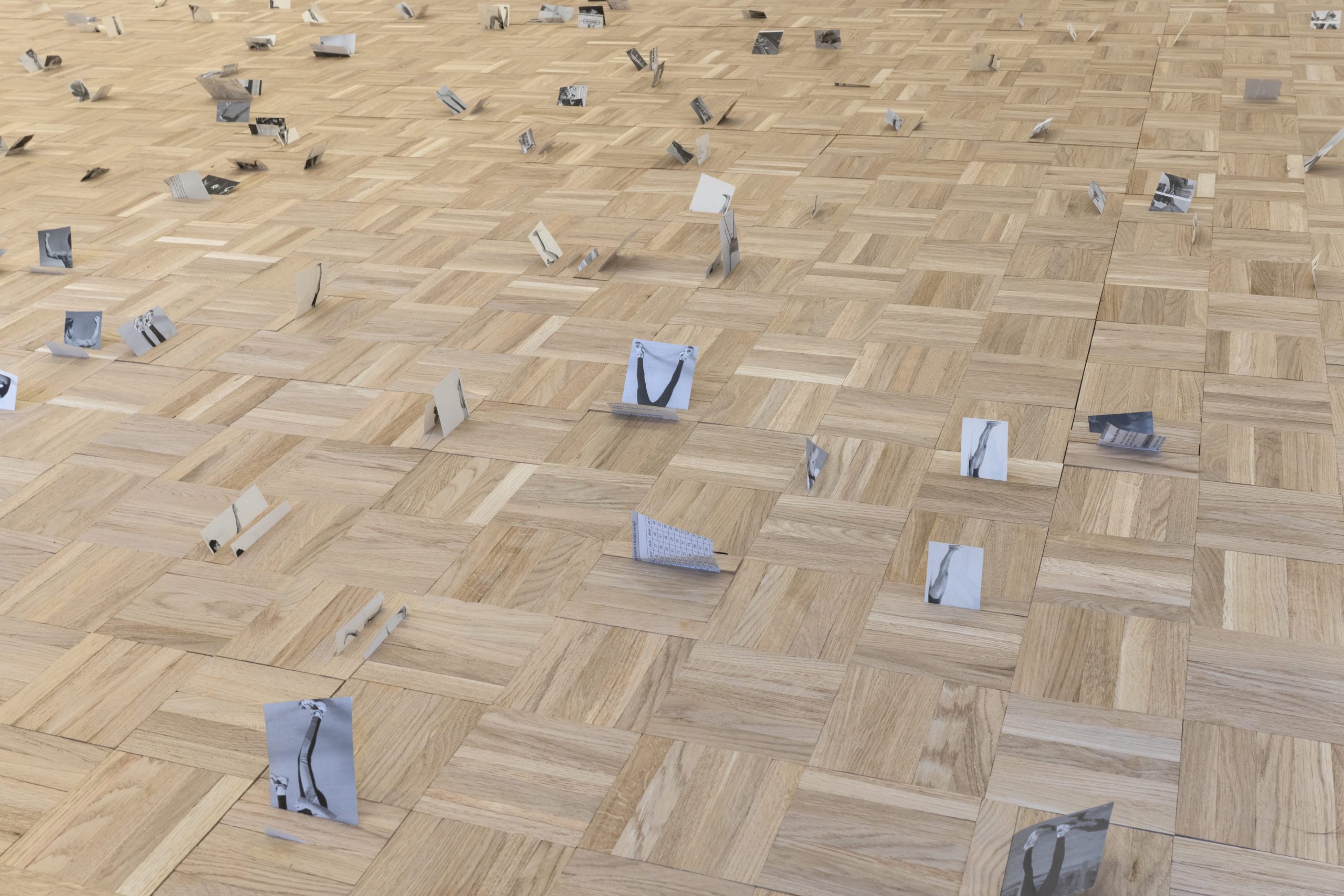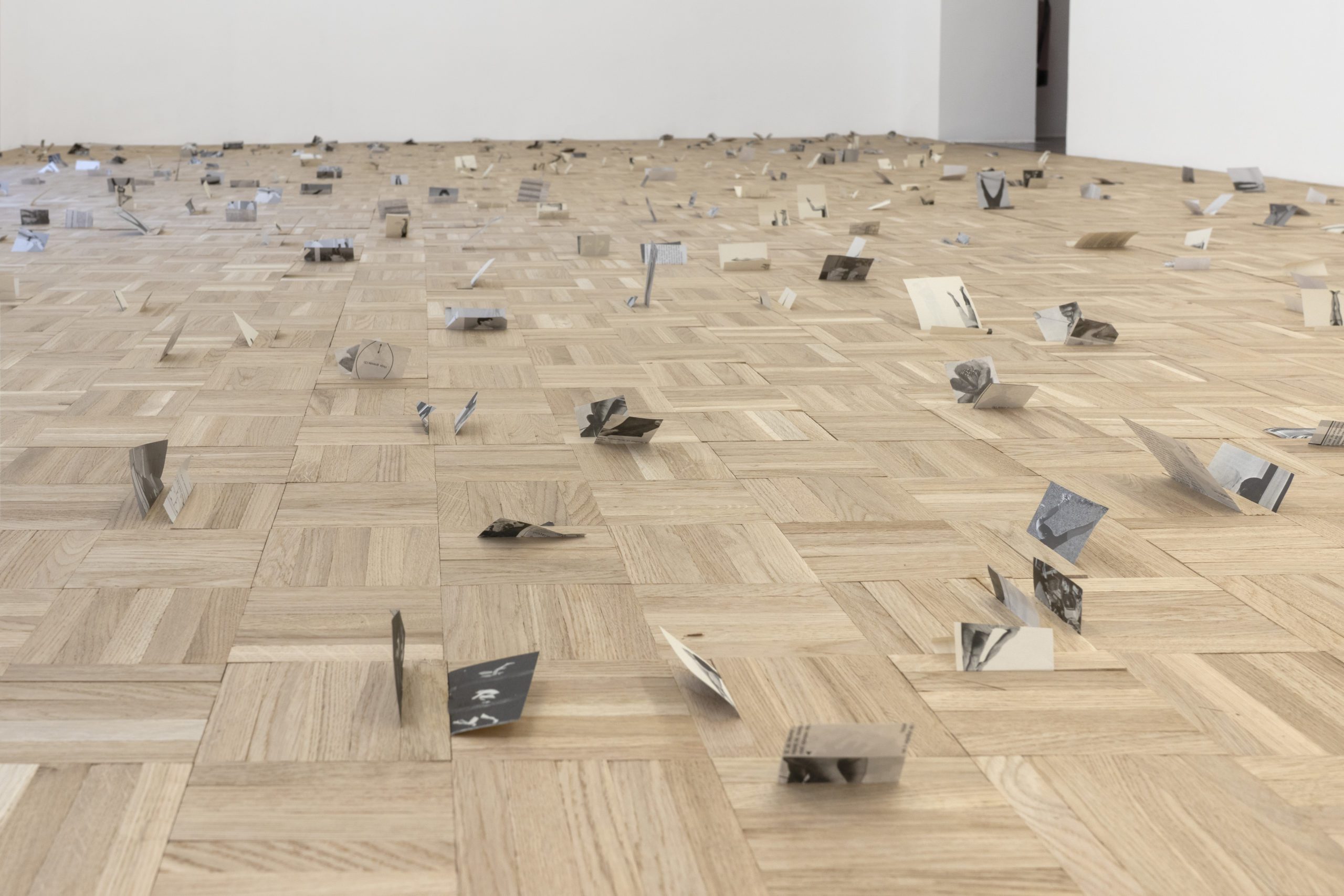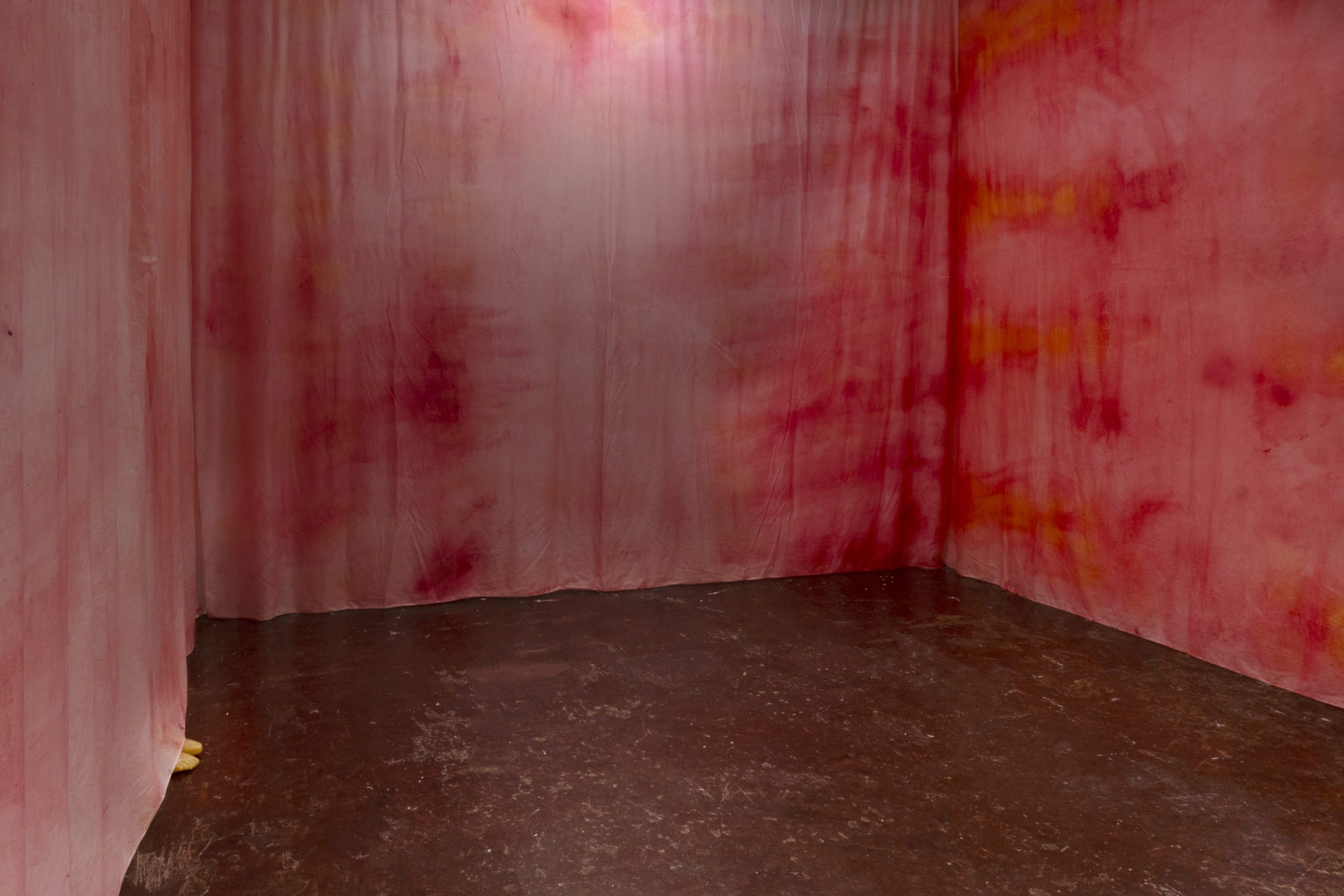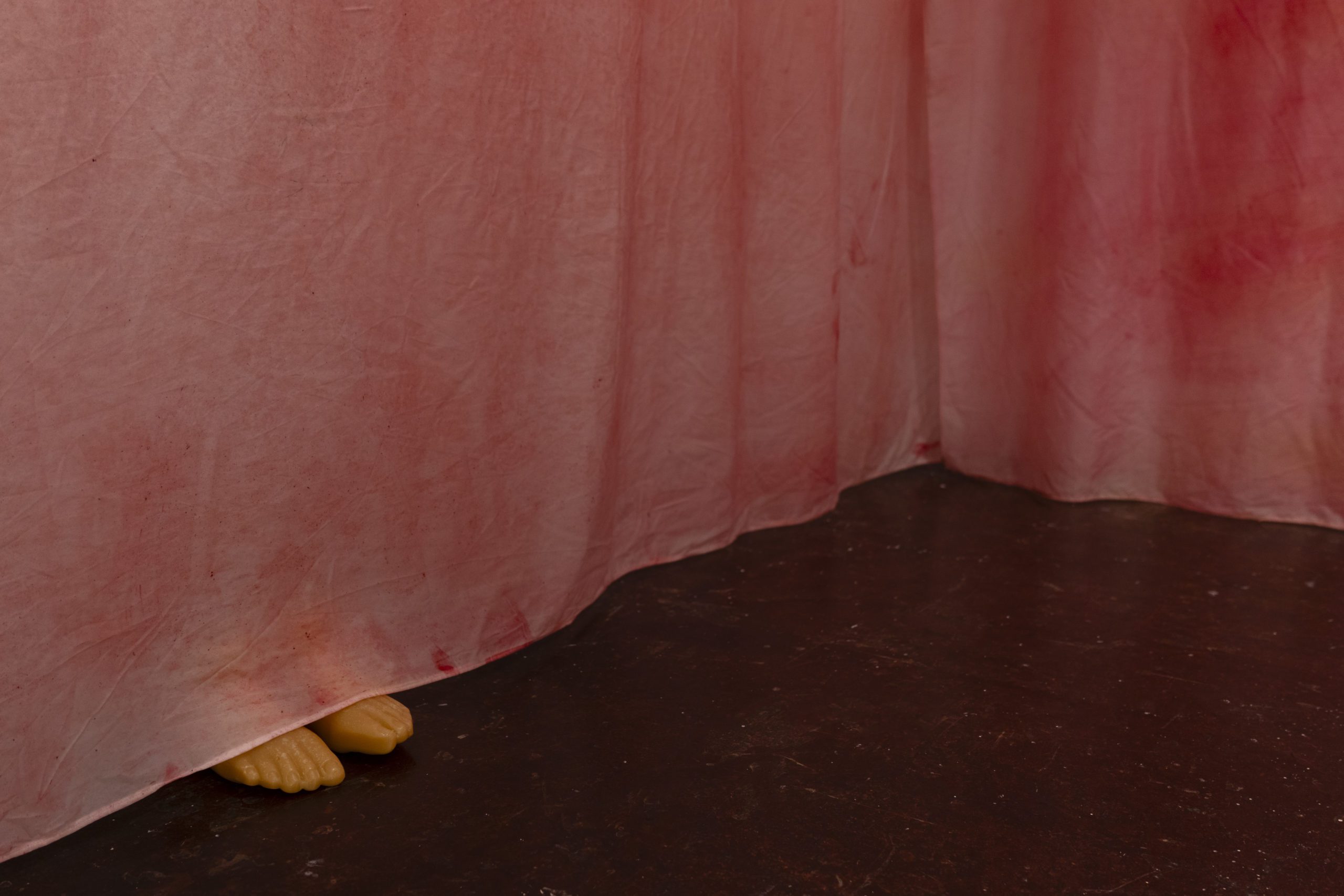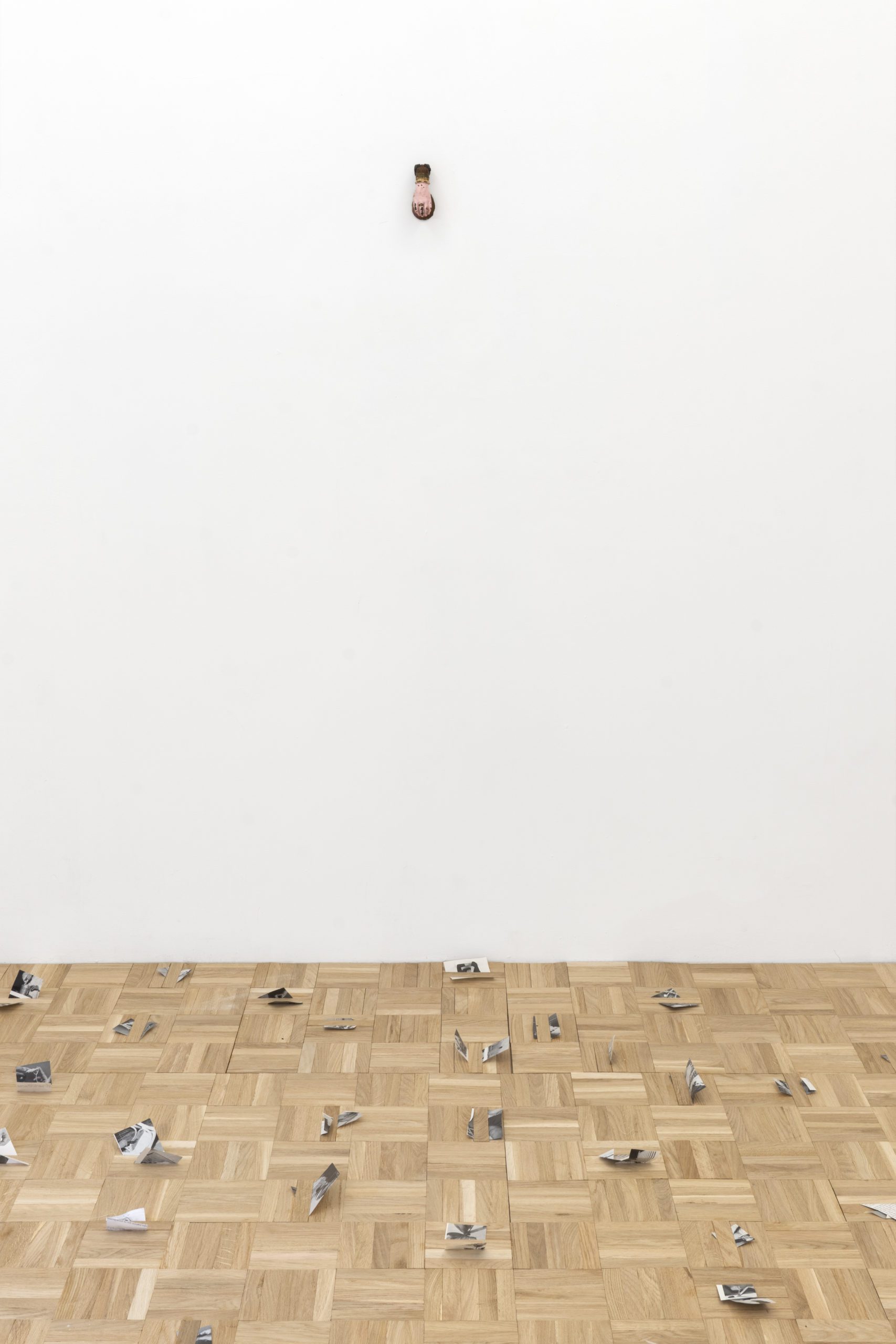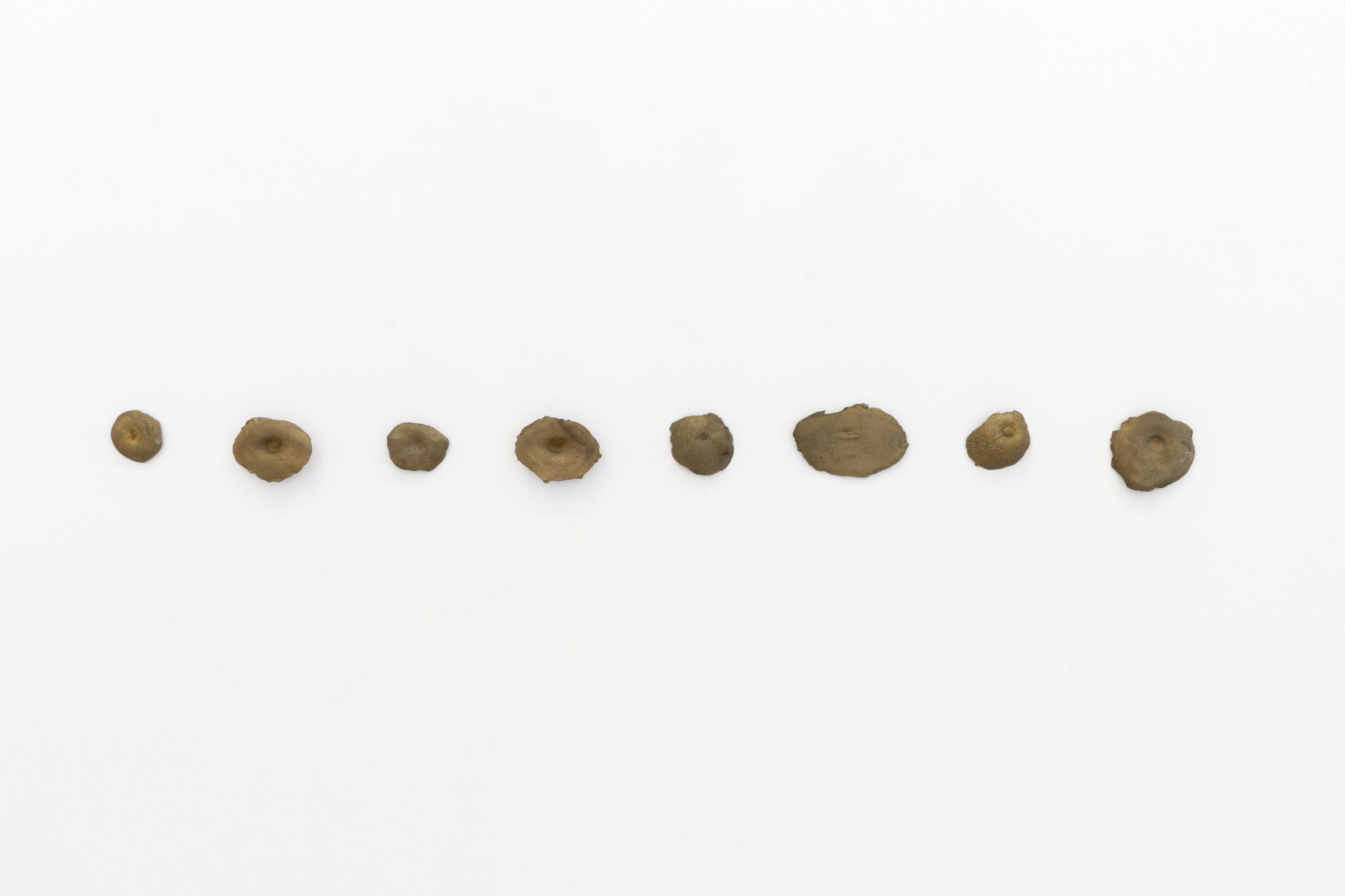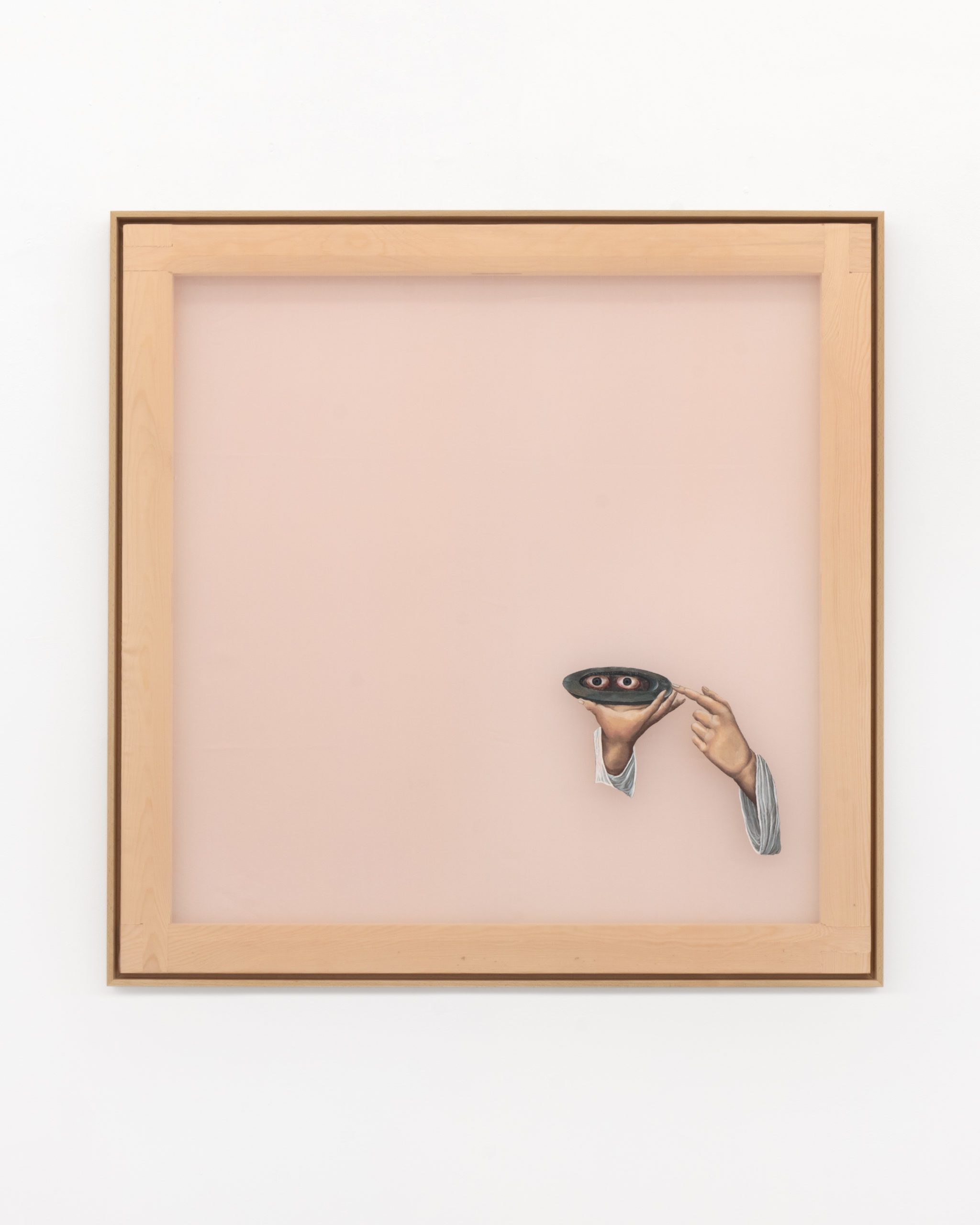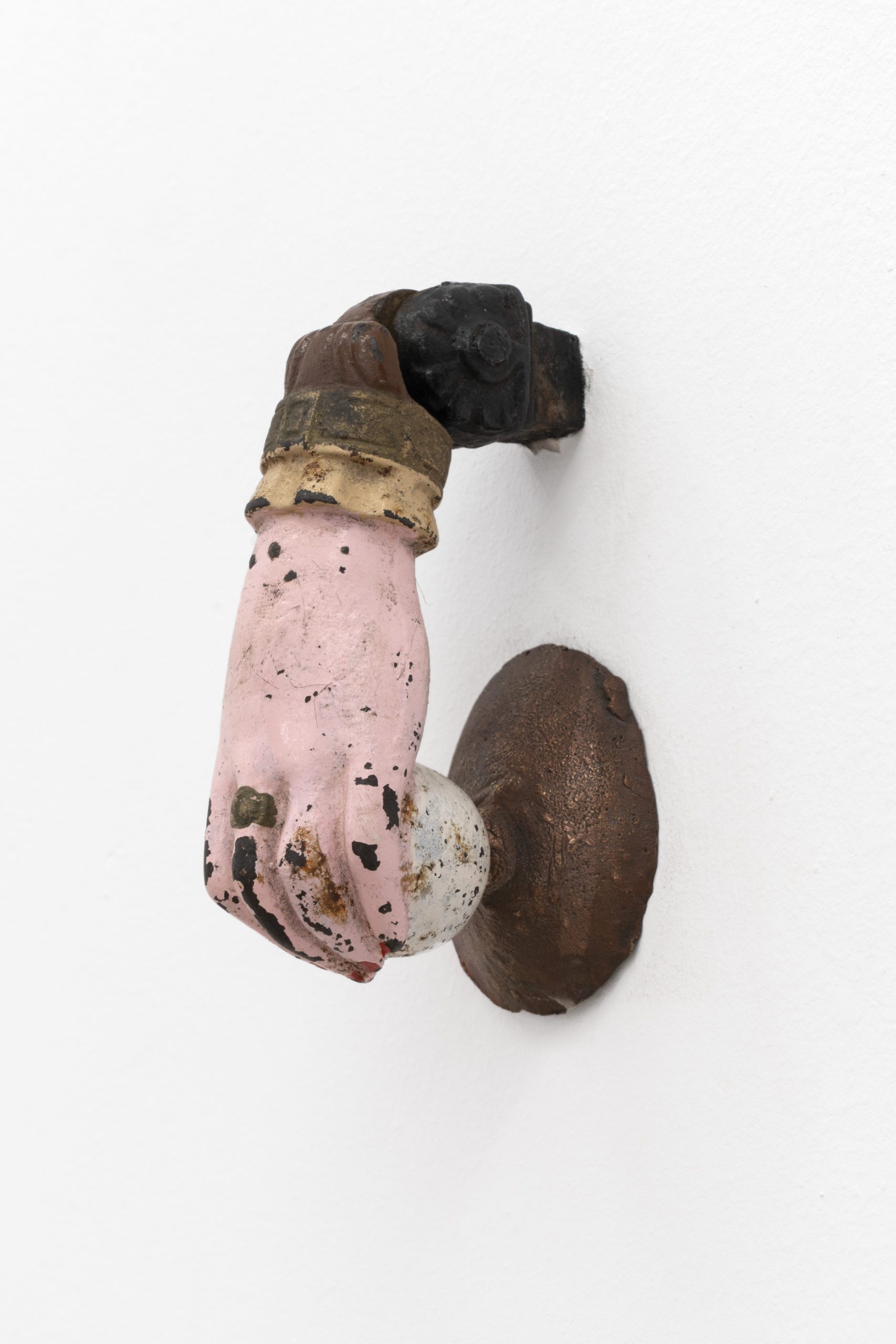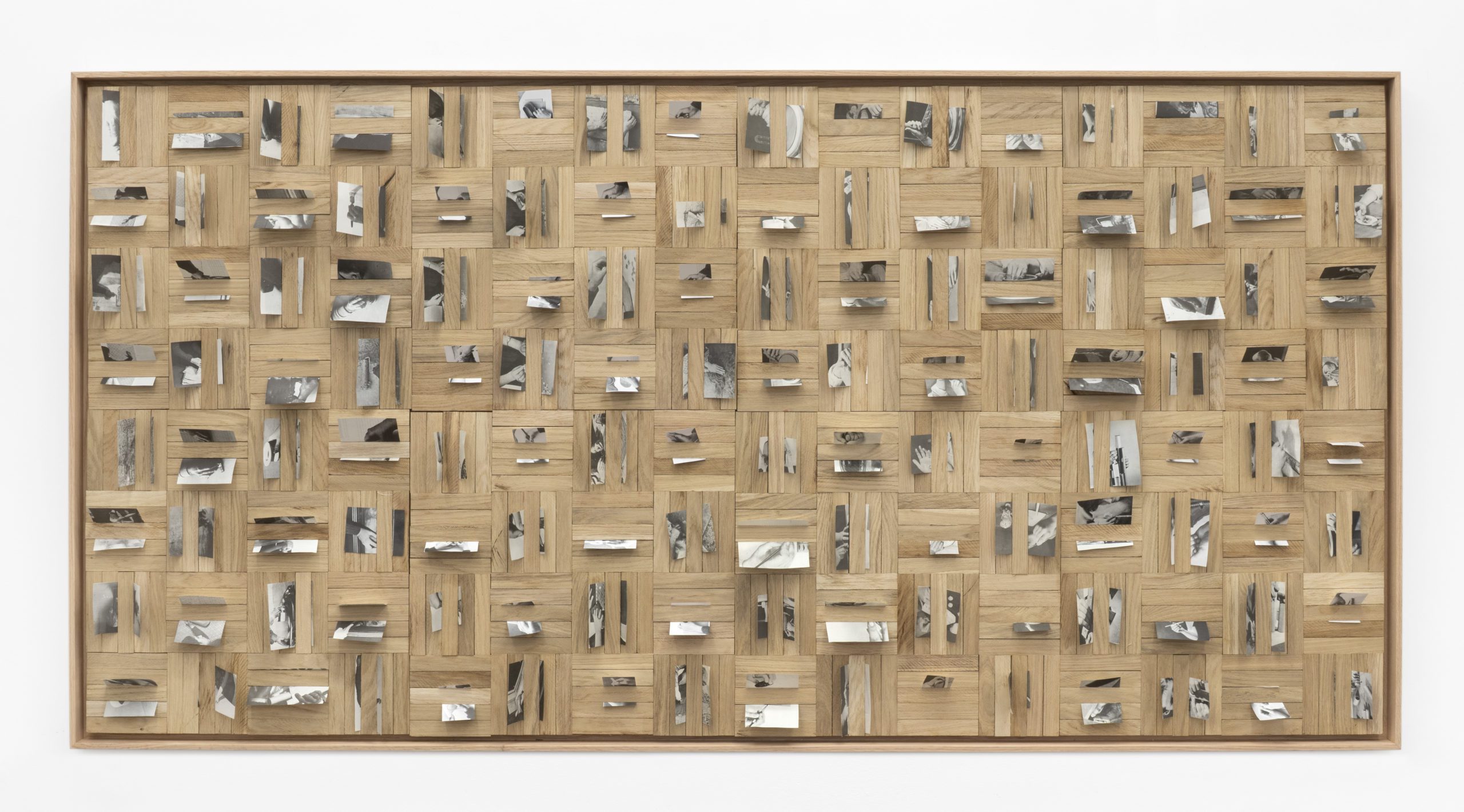Exposiciones /
CLARA SÁNCHEZ SALA: DEL MARFIL AL COLOR HÍGADO
11.09.2025 - 08.11.2025Del marfil al color hígado se articula como una exploración sostenida sobre los límites entre materia y cuerpo. El proyecto surge de una búsqueda persistente por conferir gravedad corpórea a lo inerte, activando la ilusión de vida en formas escultóricas mediante gestos que transitan entre lo ritual y lo cotidiano.
A medio camino entre la intimidad del gesto y la resonancia de lo clásico, las obras combinan materiales diversos —como el maquillaje— con otros de tradición escultórica y carga histórica, como la cera, la seda, la madera o el bronce. Esta fricción entre lo doméstico y lo noble desafía jerarquías convencionales, proponiendo un diálogo entre la experiencia sensorial del cuerpo y la abstracción del ser.
La instalación genera un espacio donde lo escultórico parece rozar lo humano, no por la mímesis formal, sino por su capacidad de suscitar presencia. Aquí, lo inerte se encarna, insufla vida. Del marfil al color hígado es una reflexión sobre la posibilidad de habitar la escultura.
La muestra parte de un enfoque que entiende la escultura no como objeto cerrado y acabado, sino como proceso corporal y ritual, abierto al tiempo, a la transformación y a la experiencia sensorial. En este tránsito, el uso de materiales cotidianos del ámbito doméstico, como el maquillaje o el parquet de una casa, se observa y trabaja desde un acercamiento escultórico. Todas las piezas del proyecto parten de objetos domésticos para generar un conjunto que insufle vida a materiales inertes, habitándolos en el espacio doméstico.
El título del proyecto establece una referencia directa a dos materiales clásicos de la escultura: el marfil y el bronce. Por un lado, el marfil evoca una relación simbólica con el hueso humano, no solo por su tonalidad blanquecina y amarillenta, sino también por su historia cargada de connotaciones corporales. Por otro lado, el “color hígado” alude a una pátina específica aplicada al bronce en la escultura clásica, conocida como hepatizon, que adquiría una tonalidad oscura y rojiza similar a la del órgano de su nombre. Ambos materiales, en sus cualidades táctiles y visuales, parecen querer acercarse a la idea de cuerpo, como si desde lo inerte intentaran simular presencia vital, señalando un tránsito simbólico de lo inerte a lo vivo y recuperando el gesto mítico de Pigmalión.
Clara Sánchez Sala
Un velo davanti algli occhi (MNAC)
2025
Maquillaje sobre seda
95 x 95 x 4 cm
Clara Sánchez Sala
La seuil du bronze
2025
Aldaba antigua y bronce
9,3 x 4 x 5,5 cm
Clara Sánchez Sala
Tous les revêtements de la maison
2025
Fotografía sobre tarima de madera
100 x 200 x 4 cm

